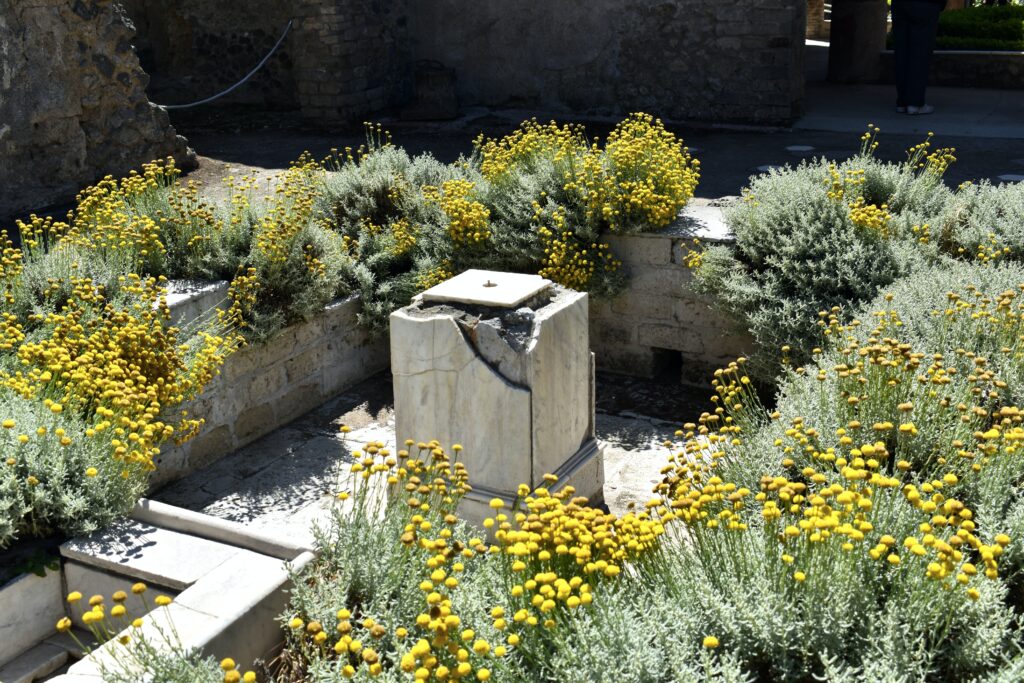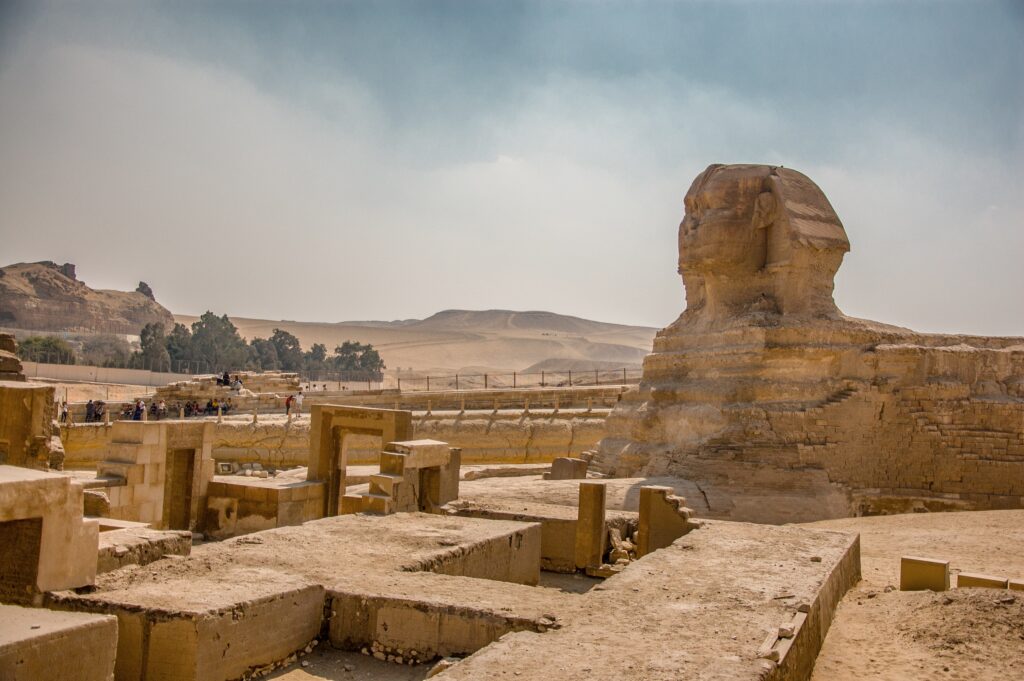In a remarkable discovery, researchers have successfully deciphered the first word from ancient scrolls that survived the volcanic eruption of Mount Vesuvius in 79 A.D. The word “porphyras,” meaning “purple” in ancient Greek, was extracted from a fragile papyrus scroll using innovative techniques. The experts behind this breakthrough believe that their methods could lead to the recovery of other lost classical works, offering a unique opportunity to expand our knowledge of the ancient world. These scrolls, carbonized by the volcanic eruption, have remained unread for nearly 2,000 years, and the delicate nature of the papyrus makes it impossible to unroll them without causing irreparable damage. However, with the use of computer tomography and advancements in artificial intelligence, researchers have made significant progress in electronically reconstructing the contents of these preserved but highly delicate scrolls.
The Technique of Retrieving Hidden Text

Introduction to the technique
The discovery of the technique to retrieve hidden text from delicate papyrus scrolls has brought hope for the recovery of lost classic works. These ancient scrolls, which have been carbonized by the eruption of Mount Vesuvius in A.D. 79, have remained unreadable for almost 2,000 years. However, recent advancements in computer tomography and artificial intelligence have allowed researchers to extract fragments of text from these fragile scrolls without unrolling them.
Success in retrieving hidden text from papyrus scrolls
The success in retrieving hidden text from the Herculaneum scrolls has been a breakthrough in the field. These scrolls, which were discovered in 1752 at a grand villa believed to have been owned by Julius Caesar’s father-in-law, have proven to be extremely challenging to read due to their delicate state. Previous attempts to unroll the scrolls resulted in their destruction and minimal text recovery. However, the new technique developed by Dr. Brent Seales at the University of Kentucky has shown promising results in electronically reconstructing the contents of these ancient scrolls.
Hope for recovery of lost classic works
The retrieval of hidden text from the Herculaneum scrolls has ignited hope for the recovery of lost classic works. The scrolls, which were preserved by the eruption of Mount Vesuvius, hold great potential for uncovering ancient Greek and Roman literature that has been lost to time. With further advancements in the technique developed by Dr. Seales, it is believed that entire scrolls and even libraries could be recovered, expanding our knowledge of the ancient world.
The Herculaneum Scrolls
Origin and preservation of the Herculaneum scrolls
The Herculaneum scrolls were preserved by the eruption of Mount Vesuvius in A.D. 79. These scrolls, which come from a grand villa believed to have been owned by Julius Caesar’s father-in-law, were carbonized by the hot gases and volcanic mud that engulfed the city of Herculaneum. This unique preservation method has allowed the scrolls to survive for almost 2,000 years, albeit in a fragile and unreadable state.
Carbonization by Mount Vesuvius eruption
The carbonization process, caused by the eruption of Mount Vesuvius, has rendered the Herculaneum scrolls extremely delicate and prone to crumbling if unrolled. This has posed a challenge for researchers who have sought to read the hidden text within these scrolls. However, recent advancements in technology, specifically computer tomography and artificial intelligence, have provided a new avenue for deciphering the contents of these ancient documents.
The Scroll That Divulged Its First Word
Retrieval of the word ‘porphyras’
In a significant breakthrough, researchers were able to retrieve the word ‘porphyras’ from one of the Herculaneum scrolls. This word, which means ‘purple’ in ancient Greek, was visualized through computer scans and identified by Luke Farritor, a computer science student. The significance of this discovery lies in the fact that it represents the first tangible evidence of readable text within these ancient scrolls.

Significance of the word in ancient Greek
The word ‘porphyras’ holds cultural and historical significance in ancient Greek society. In Greek literature, the color purple was associated with wealth, royalty, and power. It was also linked to the symbolism of nobility and divinity. The retrieval of this word from the Herculaneum scroll provides insight into the cultural context and themes explored in ancient Greek texts.
The New Approach to Reading the Scrolls
Development of the technique by Dr. Brent Seales
The new approach to reading the Herculaneum scrolls was developed by Dr. Brent Seales, a computer scientist at the University of Kentucky. Over the past 20 years, Dr. Seales has been working on refining this technique, utilizing computer tomography and artificial intelligence to analyze the scrolls without unrolling them. His pioneering research has paved the way for the retrieval of hidden text from these delicate artifacts.
Use of computer tomography and artificial intelligence
Computer tomography, commonly known as CT scans, has played a crucial role in the retrieval of hidden text from the Herculaneum scrolls. This technology allows researchers to create detailed 3D images of the scrolls, enabling them to examine the internal structure without causing damage. Furthermore, advancements in artificial intelligence have helped in distinguishing the ink from the papyrus itself, contributing to the success of the technique.

Refinements in distinguishing ink from papyrus
One of the challenges in deciphering the hidden text within the scrolls is distinguishing the ink from the carbonized papyrus. Through constant refinements to the technique, researchers have been able to improve the accuracy of this differentiation. By utilizing artificial intelligence algorithms and sophisticated image processing, they have successfully identified and extracted fragments of ink, revealing small portions of readable text.
Recognition and Prizes for Discoveries
Recognition of Luke Farritor and Youssef Nader
Luke Farritor, a 21-year-old computer science student, was recognized for his contribution to the retrieval of hidden text from the Herculaneum scrolls. He successfully identified the word ‘porphyras’ from a small patch of the scroll, earning him a prize of $40,000. Additionally, Youssef Nader, a biorobotics graduate student, independently discovered the same word a few months later and was awarded a $10,000 prize. These individuals’ contributions have played a significant role in advancing our understanding of these ancient texts.
Casey Handmer’s discovery of ink within unopened scrolls
Casey Handmer, an entrepreneur, made a groundbreaking discovery by demonstrating the presence of ink within the unopened scrolls. His findings confirmed the potential for recovering additional hidden text from these delicate artifacts. This discovery further solidifies the significance of the technique developed by Dr. Seales and brings us one step closer to deciphering the full contents of the Herculaneum scrolls.

The significance of these discoveries
The recognition and prizes awarded to individuals involved in the retrieval of hidden text from the Herculaneum scrolls highlight the groundbreaking nature of these discoveries. These advancements in technology and the ability to extract fragments of readable text from ancient artifacts have opened doors for further exploration and understanding of the classical world. These findings have the potential to transform classical scholarship and expand our knowledge of ancient Greek and Roman literature.
Implications for Classical Scholarship
The potential for recovering entire scrolls and libraries
The successful retrieval of hidden text from the Herculaneum scrolls has raised hopes for the recovery of entire scrolls and potentially even libraries. With further advancements in the technique developed by Dr. Seales, it is believed that it will be possible to electronically reconstruct the full contents of these delicate papyrus scrolls. This could lead to the recovery of lost classic works and greatly enhance our understanding of the ancient Greek and Roman worlds.
Impact on knowledge of the ancient Greek and Roman worlds
The deciphering of hidden text within the Herculaneum scrolls has the potential to significantly impact our knowledge of the ancient Greek and Roman civilizations. These scrolls contain a wealth of information on various topics, including literature, philosophy, and history. By recovering and analyzing these texts, scholars can gain insights into the cultural, social, and intellectual aspects of these ancient societies.

Comparison to the rediscovery of manuscripts during the Renaissance
The impact of the retrieval of hidden text from the Herculaneum scrolls has been likened to the rediscovery of manuscripts during the Renaissance. Just as the rediscovery of ancient texts during this period revolutionized European thought and scholarship, the recovery of lost classical works from the Herculaneum scrolls has the potential to reshape our understanding of the ancient world. It opens doors to new perspectives, interpretations, and insights into the literary and intellectual achievements of the past.
The Lost Works of Ancient Literature
The rarity and loss of ancient Latin and Greek texts
The loss of ancient Latin and Greek texts has been a significant blow to our understanding of classical literature. While some works have survived through various means, the majority have been lost to time. The preservation and recovery of these lost works, such as those potentially hidden within the Herculaneum scrolls, hold immense value for scholars and enthusiasts alike. They provide a unique glimpse into the literary achievements of ancient civilizations.
The importance of recovering a classical library
Recovering a classical library, such as the one potentially housed within the villa at Herculaneum, would be an invaluable contribution to classical scholarship. Such a library would contain a wealth of ancient texts, providing a comprehensive view of the literary and intellectual landscape of the time. This discovery could shed new light on the works of renowned ancient authors and unveil hidden gems of classical literature, elevating our understanding of the ancient world to new heights.
The Role of Chance in Preservation
Survival of works through hand copying and chance preservation
The preservation of ancient works has often been a matter of chance and circumstance. While hand copying manuscripts through the Middle Ages played a significant role in preserving ancient literature, it was not a selective process. The survival of works ultimately depended on the circumstances of their preservation. The carbonization of the Herculaneum scrolls by the eruption of Mount Vesuvius, for example, was a fortunate event that ensured their survival, albeit in a fragile state.
The possibility of discovering new masterpieces in Piso’s library
The potential discovery of a classical library, potentially belonging to Piso, within the unexcavated rooms of the villa adds an element of excitement and possibility to the project. If such a library were to be found, it could hold not only authoritative versions of widely known works but also previously unknown or lost masterpieces. The role of chance in preserving these texts becomes evident, as the discovery of new and extraordinary works hinges on the uncovering of Piso’s library.
The Unwrapping of the Scrolls
CT-scanning and the retrieval of letters
The process of unwrapping the Herculaneum scrolls has been made possible through the use of CT-scanning technology. This non-invasive technique allows researchers to create detailed images of the internal structure of the scrolls, revealing hidden letters and text. By piecing together these fragments, scholars can begin to reconstruct the contents of the scrolls and gain insights into the ancient texts they contain.
The need to attach letters to proper surfaces
Deciphering the hidden text within the scrolls involves more than just identifying individual letters. It also requires attaching these letters to their proper surfaces within the scroll. This process allows for the reconstruction of coherent words and sentences, enabling a deeper understanding of the content. Researchers have developed sophisticated algorithms and image processing techniques to accomplish this task effectively.
The progress made through the involvement of machine learning experts
The involvement of machine learning experts has significantly contributed to the progress made in deciphering the Herculaneum scrolls. These experts, utilizing their knowledge and expertise in artificial intelligence, have developed algorithms and software programs that aid in the identification and reconstruction of hidden text. Their involvement has accelerated the project and brought us closer to a fuller understanding of the ancient works contained within the scrolls.
Prizes and Public Participation
The offering of prizes to accelerate the project
In order to expedite the process of deciphering the Herculaneum scrolls, prizes have been offered to incentivize progress. Private donors have sponsored a $700,000 prize for anyone who can retrieve four separate passages of at least 140 characters, the original length of a tweet, within the scrolls. This initiative has encouraged the involvement of individuals and experts from various fields, contributing to the advancement of the research and the retrieval of hidden text.
Significance of retrieving specific passages
The retrieval of specific passages within the Herculaneum scrolls holds great significance for scholars and researchers. These passages provide glimpses into the themes, ideas, and cultural context of ancient Greek and Roman literature. Each deciphered passage adds to our understanding of the broader literary landscape of the time and inspires further exploration and analysis.
Interest and involvement of individuals and private donors
The retrieval of hidden text from the Herculaneum scrolls has garnered significant interest and involvement from individuals and private donors. Their support has been instrumental in funding research, offering prizes, and driving the project forward. The enthusiasm and passion of these individuals highlight the importance and value placed on the recovery of lost classical works and the advancement of classical scholarship.
In conclusion, the technique of retrieving hidden text from the Herculaneum scrolls has opened up new possibilities for the recovery of lost classic works. Through advancements in computer tomography and artificial intelligence, fragments of readable text have been extracted from these delicate artifacts. The retrieval of the word ‘porphyras’ represents a significant breakthrough, with implications for classical scholarship and our understanding of the ancient Greek and Roman worlds. The involvement of machine learning experts, the offering of prizes, and the support of individuals and private donors have accelerated the progress of the project. The ultimate goal is the recovery of entire scrolls and libraries, expanding our knowledge of ancient literature and providing invaluable insights into the cultural and intellectual achievements of the past.

